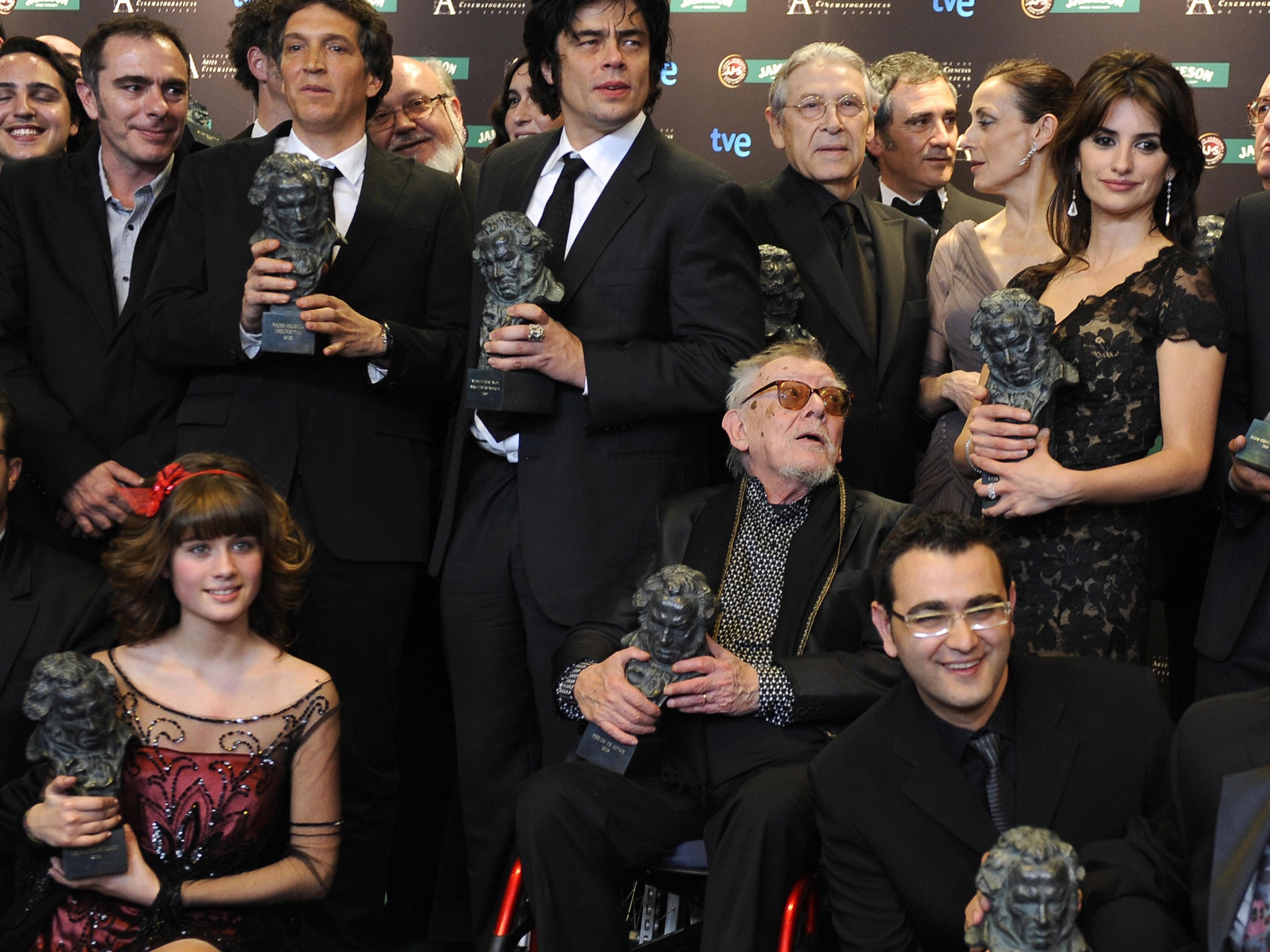Jesus Franco: Director whose trash aesthetic brought him cult fame

There was never a clear school of thought on the films of Jesus Franco. His work was variously given a retrospective at the Cinémathèque Française in 2008, and mocked on Mystery Science Theater 3000, a show devoted to ridiculing the most inept of B-movies, in 1992. What was beyond argument was that his "sexadelic" horror output, running to over 190 films – many made during his most productive period in the late 1960s and 1970s – and boasting titles like Vampyros Lesbos (1971) and A Virgin Among the Living Dead (1973), typified his work, as did his habitual use of the zoom lens.
Like the jazz musician he once was, Franco took pleasure in extemporisation. Sometimes, it seemed unimportant which film he was actually making. One of the cast of Necronomicon (1967), Michel Lemoine, recalled filming a gunfight that "went on for three days and had nothing to do with Necronomicon, so we were puzzled. Franco replied imperturbably that it was part of a dream sequence". It ended up being inserted into a previous film of Franco's, Residencia para Espias (1967). As he admitted, "I make certain films only to please myself."
Jesus Franco was born in Madrid to a Mexican mother and Cuban father. His favourite films as a child included the Republic Pictures Saturday-morning serials, and he would always have a fondness for Hollywood film noir of the 1940s. Briefly studying at what later became the Official Film School of Spain, his earliest feature-film credit, as co-writer and assistant director, was El Coyote (1954).
Confounding expectations, Vampiresas 1930 (1960) was not one of his typical works, but had the same premise as Singin' in the Rain, being a musical set in the dying days of the silents. Franco once said that ideally, that film's star, Debbie Reynolds, and Raquel Welch, would have been his leads in Sadisterotica and Kiss Me, Monster (both 1967), two films made back-to-back about the exploits of a pair of glamorous detectives.
Despite the efforts of his most assiduous chroniclers, Franco's claims to have been a published novelist, as David Khune, and to have assisted on the Spanish-made epics Solomon and Sheba (1959), and 55 Days At Peking (1963), have never been verified. It is true that he was Orson Welles's second-unit director on Chimes at Midnight (1965). In later life, Franco needed no persuasion to reminisce about working with Welles, recalling he had vouchsafed dislike of the soundtrack imposed on Touch of Evil by Universal.
Franco's first horror success was a monochrome slasher movie, Gritos En La Noche (1962), owing something to Georges Franju's Eyes Without a Face, and its American title, The Awful Dr Orlof, to Riccardo Freda's The Horrible Dr Hichcock. Plump and resembling a young Peter Lorre, Franco can be spotted playing the piano (although he had been a trumpeter, when a jazzman) in one scene; later becoming hirsute, he continued to make Hitchcock-like appearances.
He first indulged in protracted strip sequences, odd camera angles, and his oneiric side in Necronomicon, shown with an X-rating as Succubus in English-speaking countries. It garnered praise from other film-makers, Fritz Lang terming it "a beautiful piece of cinema", and the print shown at the Fantastic Fest, in Austin, Texas in 2009, was on loan from the personal collection of Quentin Tarantino.
Billed as Jess Franco, he made the last two in Christopher Lee's Sax Rohmer adaptations, The Blood of Fu Manchu (1968) and The Castle of Fu Manchu (1969), the latter being chosen for Mystery Science Theater 3000. When Franco characteristically finished shooting The Girl From Rio (1968) a week ahead of schedule, producer Harry Alan Towers wrote 99 Women (1968) over a weekend and Franco shot it in three weeks. The result was briefly No 1 in the US; Franco's other women-in-prison films, Barbed Wire Dolls and Women Behind Bars (both 1975), had less mainstream appeal.
He had begun making outright hardcore with Female Vampire (1973), starring his muse and partner from that year, Lina Romay. Following their release on video, Women Behind Bars, Bloody Moon and Devil Hunter (1980), boasting a pop-eyed cannibal zombie, landed on the Director of Public Prosecutions' first list of "video nasties", and were swiftly banned.
In pre-internet times, finding information on Franco was not easy, and apart from photocopied fanzines and nocturnal screenings on ITV of one of his mildest (and own favourites), Dracula Prisoner of Frankenstein (1972), it was as though he had never existed. In 1996, he appeared on Channel 4's Eurotrash, summing up his view of the cinema as "Blood... Tits!... fantastic!", the last word being much used in his English vocabulary. A frail Franco received a Goya Award for lifetime achievement in 2009. He suffered a stroke in March.
Jesus Franco Manera, film director: born Madrid 12 May 1930; married Nicole Guettard (divorced 1996); 2008 Lina Romay (died 2012); died Malaga 2 April 2013.
Subscribe to Independent Premium to bookmark this article
Want to bookmark your favourite articles and stories to read or reference later? Start your Independent Premium subscription today.

Join our commenting forum
Join thought-provoking conversations, follow other Independent readers and see their replies